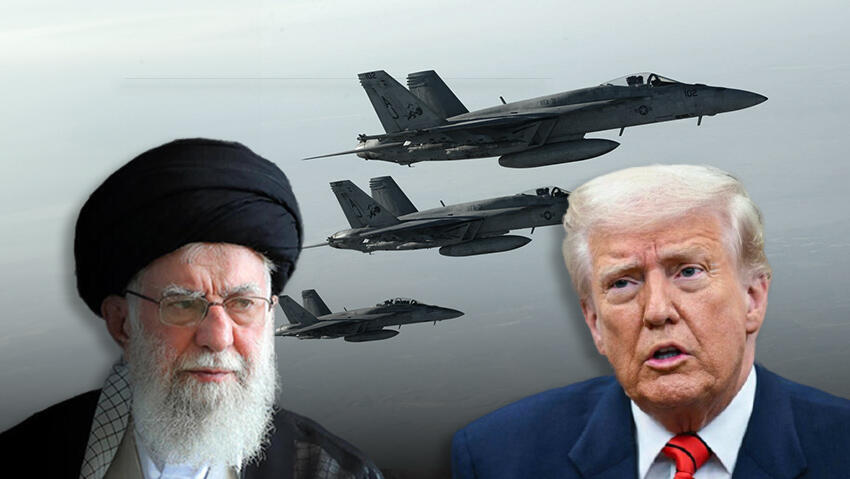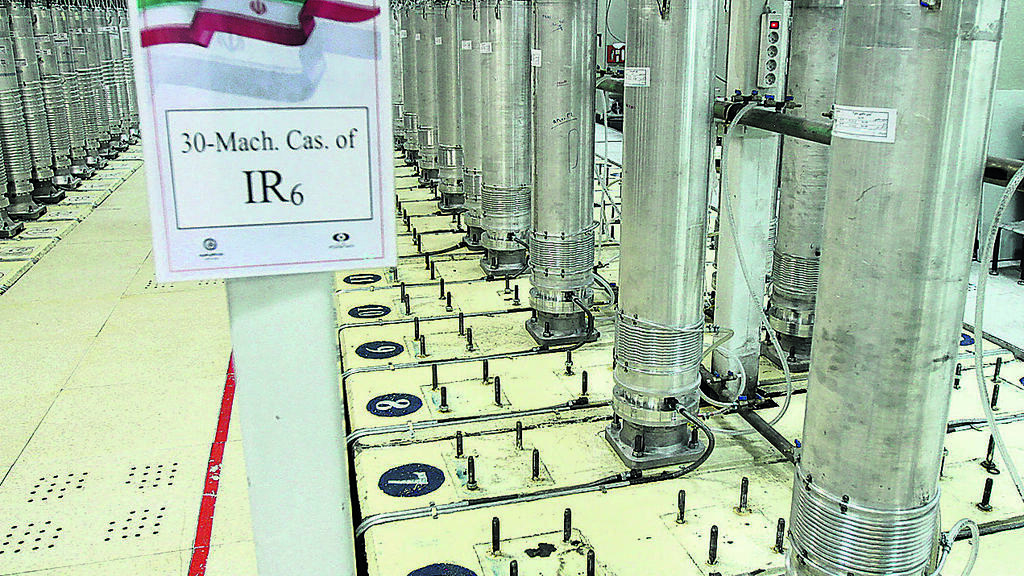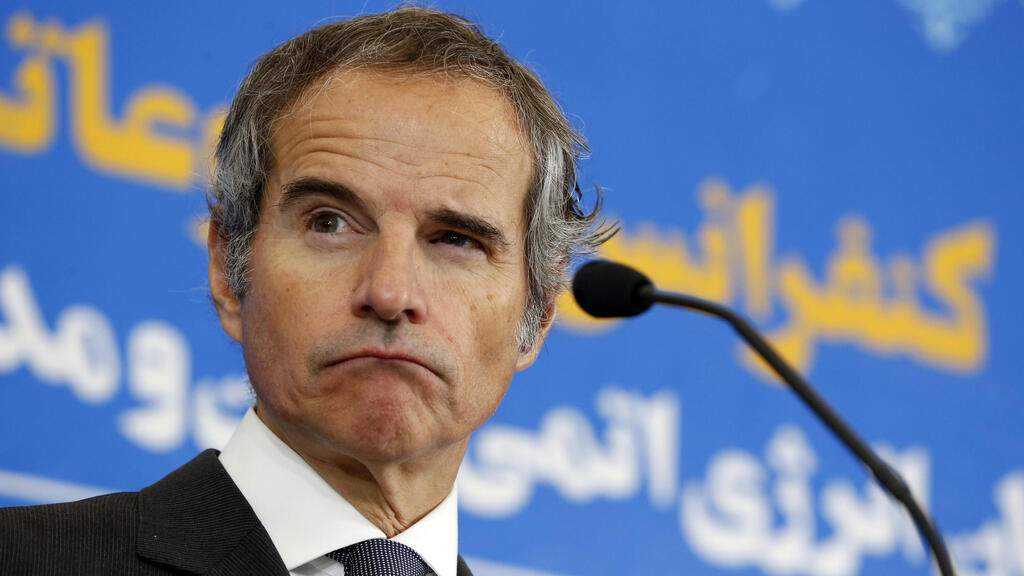Getting your Trinity Audio player ready...
Former U.S. President Donald Trump declared Tuesday that the United States would not agree to any deal allowing Iran to enrich uranium—just hours after the news outlet Axios reported that the American proposal currently under discussion with Tehran would, in fact, permit low-level enrichment for civilian use. This stance runs counter to Israel’s demand for a complete dismantling of Iran’s nuclear facilities to fully block any path to a nuclear weapon.
While the full details of the U.S. proposal have not been made public, The New York Times reported that the initial phase of the proposed deal would allow Iran to continue enriching uranium at low levels. Iranian and European officials told the newspaper that Washington is offering an interim agreement under which the U.S. would help Iran establish nuclear power reactors and launch negotiations to build enrichment facilities operated by a consortium of Arab states. Only once these conditions are met would Iran be required to halt all enrichment on its own soil.
4 View gallery


(Photos: Mandel Ngan / AFP, Mohammed Yassin/Reuters, Iranian Leader's Press Office, AP)
In the meantime, Iran would be allowed to enrich uranium at low levels for several years until the new facilities become operational. The New York Times described this strategy as a U.S. attempt to “trap” Iran in a bear hug of regional cooperation—led by countries such as Saudi Arabia and the UAE—that would permit the supply of fuel for power plants but prevent Iranian domestic enrichment.
Reuters reported Monday that Iran plans to formally reject the U.S. offer. Iranian Foreign Minister Abbas Araghchi did not confirm the report but hinted at dissatisfaction, stating during a visit to Lebanon that the proposal contains “many ambiguities” and “raises numerous questions.”
He reiterated that Iran would never agree to give up its ability to enrich uranium. “Continued enrichment on Iranian soil is a red line,” he said.
White House Press Secretary Karoline Leavitt was asked Tuesday about the negotiations and reiterated what she called a “crystal-clear” message. “The president has made his position unequivocal on Truth Social—it couldn’t be clearer. Iran will not be allowed to enrich uranium,” she said.
She added that Special Envoy Robert Witkoff had submitted a “detailed and broadly acceptable” offer to Iran’s regime. “The president hopes they will accept it. If not, they will face severe consequences—as he has repeatedly emphasized.”
Watchdog in the dark: IAEA’s broken puzzle of nuclear oversight
Even if a deal is reached, it would need to address not just uranium enrichment but also the massive knowledge gaps faced by international inspectors regarding Iran’s nuclear progress. Reuters published an investigative report on the severe challenges faced by the International Atomic Energy Agency (IAEA) since Trump withdrew from the 2015 nuclear deal in 2018—prompting Iran to severely curtail inspector access.
The agency now operates with numerous “blind spots” in its core mission: verifying that Iran is not developing nuclear weapons. One IAEA source said that last year, when Iran moved hundreds of advanced IR-6 centrifuges to its underground Fordow facility, inspectors watched the trucks arrive—but had “no idea where the centrifuges came from.”
Due to Iranian restrictions, the IAEA no longer knows how many centrifuges Iran possesses or where they are being manufactured. The agency has also lost its ability to conduct surprise inspections at undeclared sites. Experts told Reuters that any new deal must include a robust verification mechanism to restore confidence in the oversight process.
Alarming rport: Enough uranium for 9 bombs
“The knowledge gaps in Iran’s nuclear program must be closed to gain even a basic understanding of its scope,” said Ali Vaez, director of the International Crisis Group. He noted that rebuilding the lost knowledge could take months, calling the effort “critical” for restoring trust in the process.
Iran continues to claim its program is purely civilian and that its curbs on inspections are justified because the U.S. withdrew from the original 2015 agreement. But evidence has shown that Iran had a military nuclear program until 2003, and Israeli officials assert that parts of it have continued in secret.
The original deal allowed Iran to enrich uranium up to 3.67%—suitable for civilian energy use and far below the 90% weapons-grade threshold. At the time, experts estimated that Iran’s “breakout time”—the time needed to produce enough highly enriched uranium for one bomb—was about one year. Since the U.S. withdrawal, however, Iran has advanced rapidly, reducing that time to mere days.
Trump argued in 2018 that the nuclear deal was “the worst in history” for its temporary restrictions and failure to address Iran’s missile program and support for terrorism. Critics now question whether the new proposed deal addresses these issues either. Meanwhile, Iran has been enriching uranium to 60% purity.
According to the latest IAEA report, Iran now possesses enough 60%-enriched uranium that, with further processing, could yield material for at least nine nuclear weapons. While producing a deliverable warhead—one that could be mounted on a ballistic missile—would take additional time, experts warn that Iran could shorten that timeline by producing a crude, less sophisticated weapon.
A closed window, and the 'fallback option'
A European source told Reuters that Iran’s enrichment capabilities are now so advanced that even if the program were frozen, it could be rebuilt within months. The “window of opportunity” to return to the one-year breakout time of the 2015 deal has effectively closed. Any future agreement, the source added, will require much stricter oversight mechanisms.
Since 2022, Iran has dismantled IAEA monitoring equipment installed under the original deal, including at centrifuge production sites. The agency no longer has access to footage from these cameras, and its current visibility extends only to declared enrichment facilities. According to Reuters, the IAEA now monitors about 20,000 centrifuges but has no way of knowing how many more exist or where.
Get the Ynetnews app on your smartphone: Google Play: https://bit.ly/4eJ37pE | Apple App Store: https://bit.ly/3ZL7iNv
IAEA Director General Rafael Grossi recently warned that the agency can no longer guarantee that Iran’s nuclear program is peaceful. Reconstructing oversight—what diplomats call “reestablishing the knowledge baseline”—is likely to be a daunting task.
Eric Brewer, a former U.S. intelligence analyst and current fellow at the Washington-based Threat Initiative, emphasized the challenge: “Reassembling the puzzle will be essential to any agreement. We know establishing a new baseline will be hard,” he said, adding that much will depend on Iran’s willingness to cooperate. Even then, he noted, there is a serious risk that a full picture of Iran’s nuclear activity will never be restored.




